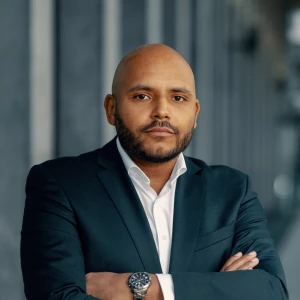is it worth it to read pyramid principle book to study how to structure cases?
Pyramid Principle Book


Dear A,
Of course you can read it to get an idea on how to structure the information at all. But as for cases sepcifically I would recommend you to read cases (at least here on the platform) and practice it. Thus you can learn to structure you cases faster and in a more effecient way.
If you need any further help, feel free to approach me.
Best,
André

Hi,
In general pyramid principle is an excellent way to communicate, that will definitely help during the case resolution and even as a futur consultant.
As for the structure it will help you introduce your approach in an efficient way, and somehow facilite the definition of the case structure by building a consistant issue tree. In that way the book is good, and I found it well written.
However, the pyramid principle won't help to identify the right issue to investigate for each case. For this it will take a bit of interview practice.
Hope this helps
Best
Benjamin

Hi,
It is worth to read beacuse it teaches you how to communicate properly. You can apply the ideas from this book in the following situations:
1) Start with clarifying questions:
https://www.preplounge.com/en/consulting-forum/clarifying-questions-1786#a3956
2) Communicating while structuring. Here is a long post by me on how to communicate the structure during the case study:
https://www.preplounge.com/en/consulting-forum/how-to-communicate-its-structure-for-the-case-study-1313#a2806
3) Using hypothesis. I made a post about hypothesis here:
https://www.preplounge.com/en/consulting-forum/how-to-state-a-hypothesis-and-match-to-the-structure-1156#a2268
4) Communicating while making calculations:
- Always tell the interviewer your approach
- Check with the interviewer that your approach is correct
- Come to the interviewer with some preliminary answers
- Check your assumptions with the interviewer
5) Communicating during the analysis of graphs / tables
- Take a minute to look at the graph. Read the graph title. Look at the graph type and define the type (pie chart, line chart, etc). Look at the legend (ask for clarifying questions if necessary). Identify whats going on on the graph. Look for: Trends, % structures. Look for unusual things - correlations, outliers,
- Make 3-4 conclusions from the graph. Think out loud on potential hypothesis on what could be the root cause / what are the consequences
- Prioritize the most important for your current analysis and move forward with the case
6) Communicating while having questions on creativity
- Ask an interview for a minute to think
- Think of several buckets of ideas (e.g. organic growth / non-organic growth / differentiation). Remember to think as big as possible
- Narrow down to each bucket and generate as many ideas as possible
- Present the structure (buckets) and then your ideas
7) Communicating your conclusion. You can find a good example I've posted here:
https://www.preplounge.com/en/consulting-forum/how-much-answer-first-should-the-conclusion-be-1231#a2493
8) Communicating your FIT stories
Use the top-down approach while communicating your stories. "The Pyramid Principle" is the must-read by ex McKinsey on this topic.
I recommend using the STAR framework:
- In Situation, you should briefly provide the context, usually in 1 or 2 sentences
- Task usually includes 2 or 3 sentences describing the problem and your objective.
- Then you provide a list of specific actions you took to achieve the goal. It should take 1 or 2 sentences per action (Usually 3-4 actions). Note that the interviewer can stop you any minute and ask for more details.
- The results part should have 1 or 2 sentences describing the outcomes. This part is finalizing your story - make sure it can impress the interviewer and stay in the memory.
Best!

The book is very dry, and I do not view it as an efficient way to prepare for case interviews. Either way - like most books, you can summarize the essence of its content in just a few sentences (indeed, the title says it all). Just focus on that, and use the time you just saved by doing more cases. You are welcome :)












